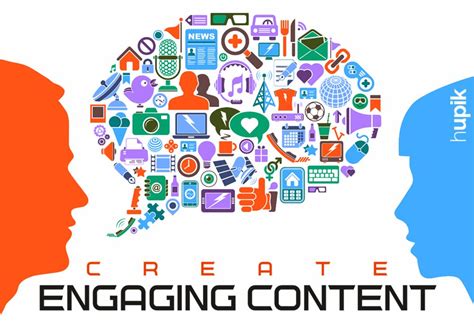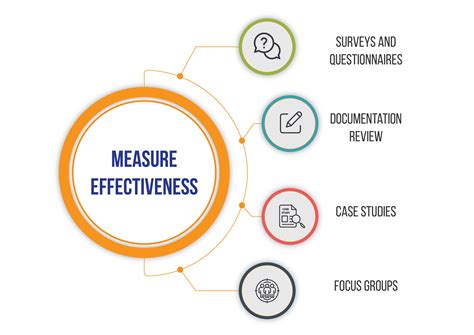In this fast-paced era of interconnectivity and information overload, the ability to captivate and engage audiences through digital content is more crucial than ever. As technology continues to advance and evolve, so must the strategies and techniques employed in the world of content creation. With countless platforms and mediums vying for attention, it is imperative for content creators to stay ahead of the curve, constantly honing their craft to ensure their message resonates and stands out among the noise.
Unlocking the secrets to successful content creation in the digital realm demands a delicate blend of art and science. It requires a deep understanding of the dynamics of human behavior, coupled with an innate ability to adapt to the ever-changing landscape of the digital age. Gone are the days of simply producing generic, one-size-fits-all content. The key lies in crafting bespoke and personalized experiences that speak directly to the desires, motivations, and needs of the target audience.
Discovering and harnessing your unique voice is a cornerstone of effective content creation. Aspiring content creators must strive to develop a distinct identity that sets them apart from the competition. This involves finding one's voice by exploring different tones, styles, and approaches, and ultimately zeroing in on a cohesive and authentic brand persona. By infusing content with personality and substance, creators can forge meaningful connections with their audience, fostering loyalty and trust.
Understanding your Target Audience

When it comes to creating compelling and effective content in today's digital era, one crucial aspect that cannot be overlooked is understanding your target audience. In order to produce content that resonates with your intended readers, viewers, or listeners, a deep understanding of their preferences, interests, and needs is essential.
Getting to know your target audience entails delving into their demographics, such as age, gender, location, and occupation. This information can provide insights into their cultural background, lifestyle, and purchasing power, helping you tailor your content to their specific characteristics. Additionally, understanding their psychographics, including their beliefs, values, attitudes, and behaviors, can give you a deeper understanding of their motivations and decision-making processes.
| Key aspects to consider when understanding your target audience: |
|---|
| 1. Interests and Hobbies |
| 2. Personal and Professional Goals |
| 3. Pain Points and Challenges |
| 4. Communication Preferences |
| 5. Media Consumption Habits |
| 6. Social Media Usage |
By thoroughly understanding your target audience, you can create content that addresses their specific interests, challenges, and aspirations. This not only establishes a connection with your audience but also enhances the chances of your content being shared and recommended within their networks.
Moreover, knowing your target audience allows you to tailor your messaging and tone to resonate with them. Whether your audience prefers a casual and conversational tone or a more professional and authoritative approach, aligning your content with their expectations can significantly increase engagement and establish your brand as a trusted source of relevant information.
In conclusion, understanding your target audience is a foundational element of successful content creation in the digital era. By gaining insights into their demographics, psychographics, and specific preferences, you can create content that captivates and connects with your intended audience, driving engagement and achieving your content goals.
Developing an Effective Content Strategy
In today's rapidly evolving digital landscape, creating compelling and engaging content is crucial for any successful online presence. Crafting a well-thought-out content strategy is the key to capturing your target audience's attention, building brand loyalty, and driving desired actions. In this section, we will explore the essential components and steps involved in developing an effective content strategy.
A content strategy encompasses various elements, such as understanding your target audience, defining your brand voice and tone, conducting thorough market research, and setting measurable goals. By combining these components, you can create a comprehensive plan that aligns your content with your overall business objectives.
One of the first steps towards developing a content strategy is identifying your target audience. Knowing who your audience is, their interests, preferences, and pain points will enable you to tailor your content to effectively resonate with them. Conducting thorough market research, analyzing demographic data, and gathering customer feedback will provide valuable insights into your audience's needs and preferences.
Once you have a deep understanding of your target audience, you can define your brand voice and tone. Your brand voice reflects the personality and character of your business, while the tone sets the emotional context of your content. Consistency in your brand's voice and tone across all channels and content types helps to establish a strong and recognizable brand identity.
In addition to understanding your audience and defining your brand's voice, conducting competitive analysis is vital. By researching and analyzing your competitors' content strategies, you can gain insights into what is working well in your industry and identify potential gaps or opportunities. This information can then be used to refine and optimize your own content strategy.
Furthermore, setting clear and measurable goals is essential for evaluating the success of your content strategy. Define key performance indicators (KPIs) that align with your overall business objectives and track relevant metrics regularly. This data will provide valuable insights into the effectiveness of your content strategy and guide necessary adjustments and improvements.
| Key Components of an Effective Content Strategy: | Steps in Developing a Content Strategy: |
|---|---|
| Understanding target audience | Identify target audience |
| Defining brand voice and tone | Conduct market research |
| Conducting competitive analysis | Define brand voice and tone |
| Setting measurable goals | Perform competitive analysis |
By incorporating these key components and following a systematic approach, you can develop a content strategy that positions your brand as a thought leader, establishes trust and credibility with your audience, and drives meaningful engagement in the digital age.
Creating Engaging and Relevant Content

When it comes to capturing your audience's attention and making a lasting impact, it all starts with creating engaging and relevant content. In today's fast-paced digital landscape, where users are constantly bombarded with information, it is crucial to stand out from the crowd and provide value to your audience. By crafting content that resonates with your target audience and addresses their needs, you have the opportunity to build strong connections, drive traffic to your website, and ultimately achieve your content marketing goals.
One key aspect of creating engaging and relevant content is understanding your audience. By gaining insights into their demographics, interests, and pain points, you can tailor your content to their specific needs. This means using language and tone that resonates with them, addressing their concerns, and providing solutions or valuable insights.
Additionally, incorporating storytelling techniques can greatly enhance the engagement and relevance of your content. Humans are wired to respond to stories, so by weaving narratives into your content, you can effectively captivate your audience's attention and create an emotional connection. Whether it's through personal anecdotes, case studies, or customer success stories, storytelling adds depth and relatability to your content, making it more engaging and memorable.
Furthermore, staying up to date with the latest trends and industry developments is vital for creating relevant content. The digital landscape is constantly evolving, and what may have been relevant yesterday may not be as impactful today. By keeping a finger on the pulse of your industry, you can provide your audience with fresh and timely content that addresses their current challenges or interests.
Lastly, interactive elements can take your content to the next level in terms of engagement and relevance. Incorporating quizzes, surveys, or interactive videos can actively involve your audience and prompt them to interact with your content. This not only keeps them engaged but also provides valuable insights into their preferences and interests, allowing you to further refine and personalize your content in the future.
In conclusion, creating engaging and relevant content in the digital age requires a deep understanding of your audience, the use of storytelling techniques, staying updated with industry trends, and incorporating interactive elements. By following these strategies, you can ensure that your content stands out amidst the digital noise and effectively engages your target audience.
Harnessing the Power of Visual Elements to Drive Engagement
In this section, we will explore the immense potential of incorporating visual content into your digital strategies to captivate and involve your target audience. By leveraging the compelling nature of visual elements, businesses can effectively connect with their online community and enhance engagement across various platforms.
When it comes to communication, visuals have an inherent ability to transmit information quickly and effectively. By utilizing visually appealing images, videos, infographics, and illustrations, businesses can effortlessly convey complex messages and evoke emotions in a concise and impactful manner. These visual stimuli have the power to grab attention, elicit curiosity, and encourage further exploration of the content, consequently boosting engagement levels.
Moreover, visual content can create a memorable and immersive experience for users, leaving a lasting impression on their minds. Human beings are naturally drawn to imagery, and incorporating visually engaging elements into your digital content helps to create a personal connection with your audience. By stimulating their senses and triggering emotional responses, businesses can foster a deeper level of engagement, building brand loyalty and encouraging repeat visits.
Furthermore, visual content has the advantage of being easily shareable across social media platforms, allowing businesses to extend their reach and amplify their message. People are more likely to share visually appealing content with their networks, leading to increased exposure and potential new audience growth. By investing in high-quality visual content creation, businesses can tap into the viral nature of social media and enhance their online visibility and engagement.
To fully harness the potential of visual content, businesses need to ensure consistency in their branding and design. Creating a recognizable visual identity that aligns with their overall marketing strategy enables businesses to establish a strong presence and strengthen their brand image. This consistency helps to build familiarity and trust with the audience, ultimately driving enhanced engagement and loyalty.
| Key Takeaways: |
| 1. Visual content is a powerful tool for enhancing engagement in the digital landscape. |
| 2. Utilizing visually appealing images, videos, infographics, and illustrations can effectively convey messages and evoke emotions. |
| 3. Visual elements create memorable experiences and foster deeper connections with the audience. |
| 4. Sharing visually engaging content across social media platforms expands reach and increases exposure. |
| 5. Consistency in branding and design strengthens brand visibility and fosters loyalty. |
Enhancing Content for Search Engines

In the rapidly evolving digital landscape, creating exceptional and compelling content is essential for establishing a strong online presence. However, it is equally crucial to optimize this content for search engines to ensure maximum visibility and reach to the target audience. By strategically incorporating relevant keywords and implementing effective SEO techniques, content creators can enhance the visibility of their content and drive organic traffic to their websites.
- Perform Keyword Research: Before embarking on content creation, thorough keyword research is vital. This involves identifying and understanding the keywords and phrases that users frequently search for, relating to the topic at hand. By incorporating these keywords naturally into the content, creators can increase the likelihood of search engines ranking their content higher in search results.
- Create High-Quality Content: While optimizing content for search engines is important, it should never be at the expense of the quality of the content itself. Creating valuable, informative, and engaging content that resonates with the target audience is crucial. Search engines prioritize high-quality content, and it is more likely to receive organic backlinks, social shares, and rank better in search results.
- Optimize Meta Tags: Meta tags provide search engines with information about a webpage's content. By optimizing the title tag, meta description, and header tags to include relevant keywords, creators can improve their content's visibility in search engine results pages (SERPs).
- Utilize Internal and External Links: Incorporating both internal and external links within content helps search engines understand the context and relevance of the content. Internal linking can guide users to related content on the same website, while external linking to authoritative sources can increase the credibility and trustworthiness of the content.
- Enhance Readability and User Experience: Creating content that is easy to read and navigate is essential for both users and search engines. Proper formatting, including headings, bullet points, and paragraphs, can enhance readability. Additionally, optimizing website speed, improving mobile responsiveness, and ensuring a seamless user experience contribute to better search engine rankings.
- Promote Social Sharing: Encouraging readers to share content on social media platforms can significantly boost its reach and visibility. Social signals, such as likes, comments, and shares, indicate to search engines that the content is valuable and relevant, potentially resulting in better search engine rankings.
By implementing these optimization strategies, content creators can attract more organic traffic, effectively reach their target audience, and establish a strong online presence in the digital age.
Promotion and Distribution Strategies on Social Media
In today's digital era, disseminating and publicizing content through various social media platforms has become an essential component for achieving effective content creation. By strategically employing social media channels, one can maximize the reach, engagement, and impact of their content, elevating its visibility and ultimately driving desired outcomes.
When it comes to promoting and distributing content through social media, it is crucial to understand the distinct characteristics and dynamics of each platform. Utilizing a mix of platforms that align with your target audience and content objectives can amplify your exposure and generate more substantial results.
- Facebook: With its extensive user base and diverse demographics, Facebook offers an ideal platform to promote content to a broad audience. Utilize engaging visuals, compelling captions, and relevant hashtags to increase the visibility and organic reach of your content. Additionally, leveraging Facebook's advertising features can further enhance your content's reach and targeting capabilities.
- Twitter: Known for its fast-paced nature, Twitter enables you to share bite-sized content and timely updates. Craft concise and impactful messages, incorporating relevant hashtags, mentions, and multimedia elements to enhance engagement and expand your content's visibility. Leveraging trending topics and participating in industry-specific conversations can also boost your content's reach and relevance.
- Instagram: As a highly visual platform, Instagram offers opportunities to showcase vibrant images and captivating videos that resonate with your target audience. Use aesthetically pleasing visuals, engaging captions, strategic tagging, and user-generated content to strengthen your content's appeal and encourage sharing. Collaborating with influencers or leveraging user-generated content can also help increase your content's reach and authenticity.
- LinkedIn: Primarily catering to professionals and businesses, LinkedIn provides a platform to share industry insights, thought leadership, and professional updates. Crafting informative and educational content, participating in relevant groups and discussions, and leveraging LinkedIn's publishing platform can boost your content's visibility among a targeted professional audience.
In summary, effective content promotion and distribution through social media necessitates a tailored approach that recognizes the unique characteristics and audience preferences of each platform. By utilizing these strategies and engaging with your target audience, you can establish a strong online presence, amplify your content's reach, and achieve your content creation goals.
Analyzing and Measuring the Effectiveness of Your Content

In today's rapidly changing digital landscape, being able to strategically analyze and measure the effectiveness of your content is essential for success. Understanding how your content is performing allows you to make data-driven decisions, identify areas for improvement, and ensure that your audience is engaged and satisfied.
1. Evaluate Engagement Levels:
- Analyze metrics such as click-through rates, time spent on page, and bounce rates to assess the level of engagement your content is generating.
- A low bounce rate and longer average time spent on page indicate that your content is compelling and holding the attention of your audience.
- Monitor social media shares, comments, and likes to gauge the level of interaction and conversation surrounding your content.
2. Measure Conversion Metrics:
- Track conversion rates to determine how effective your content is at driving desired actions, such as newsletter sign-ups, product purchases, or event registrations.
- Analyze the impact your content has on your sales funnel and identify any bottlenecks or areas that need improvement.
- Utilize tools like Google Analytics to set up conversion tracking and gain insights into the effectiveness of your content in generating conversions.
3. Monitor SEO Performance:
- Utilize tools like SEMrush or Moz to analyze keyword rankings and organic search traffic to your content.
- Identify opportunities to optimize your content for search engines by incorporating relevant keywords, improving meta tags, and enhancing on-page SEO elements.
- Regularly review your website's performance in search engine results pages and make adjustments based on data-driven insights.
4. Seek Feedback and Conduct Surveys:
- Regularly gather feedback from your audience through surveys or polls to understand their perception of your content's quality, relevance, and value.
- Actively listen to your audience's suggestions and comments and use this information to improve and fine-tune your future content creation efforts.
- Consider conducting A/B tests to compare the performance of different content variations and identify the most effective approaches.
By implementing a systematic and data-driven approach to analyzing and measuring the success of your content, you can optimize your strategies, improve audience engagement, and ultimately achieve your content goals in the dynamic digital landscape.
FAQ
What are some tips for creating successful content in the digital age?
Some tips for creating successful content in the digital age include understanding your target audience, conducting thorough research, utilizing search engine optimization techniques, incorporating visual elements, and focusing on providing valuable and engaging information.
How can I understand my target audience when creating content?
Understanding your target audience involves conducting market research, analyzing demographics, and using analytics tools to gather data on your audience's interests, preferences, and online behaviors. By understanding your target audience, you can create content that resonates with them and meets their needs.
Why is research important for successful content creation?
Research is essential for successful content creation as it helps you gather accurate and up-to-date information on the topic you're writing about. It allows you to provide accurate data, statistics, and expert insights, which can enhance the credibility and relevance of your content.
How can search engine optimization (SEO) techniques contribute to successful content creation?
Implementing SEO techniques such as keyword research, optimizing meta tags, and creating high-quality backlinks can significantly improve the visibility and ranking of your content in search engine results. This means more people will find and engage with your content, increasing its chances of success.
Why is it important to incorporate visual elements in content creation?
Visual elements such as images, infographics, and videos help make your content more visually appealing and engaging. They break up the text, capture attention, and enhance understanding. Including visual elements can increase the likelihood of your content being shared and consumed by a wider audience.



